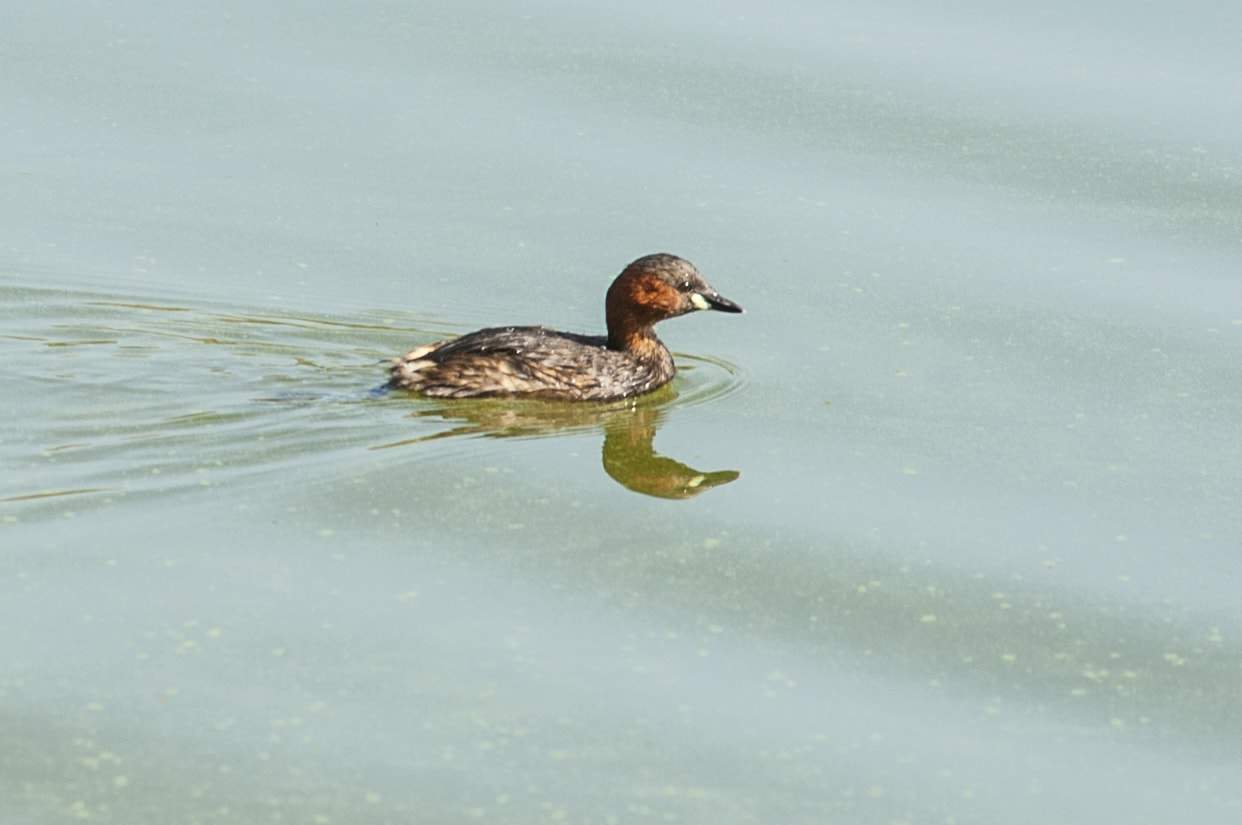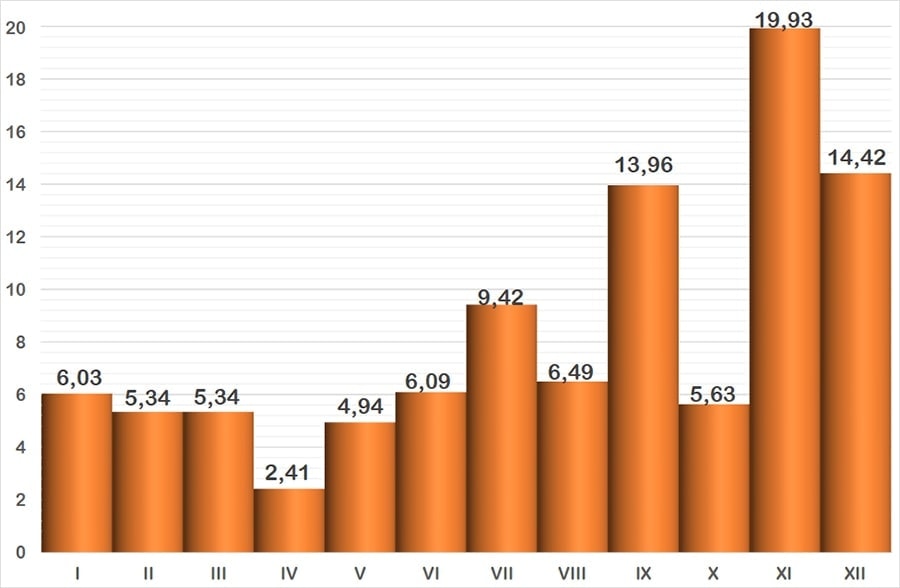Curiously, this little grebe, the smallest, looks like a typical “toy duck”: compact and stubby, with a high rump, with what resembles a “cottony tassel”. In summer plumage it is a dark bird, with two light green spots in the corners of the beak, but really it is brown, darker on the back, on the head and behind the neck. This plumage is maintained during the winter, when the white colour of the back increases and the shades become brownish ochre, the darker areas remaining unchanged. It is an extraordinary diver, diving and swimming long distances at the slightest sign of danger.

Species 1
Little Grebe
Scientific name
Family 2
Taxonomic Affinity Group 3
Phenology 4
It is considered a sedentary bird and is present throughout the year, the month in which it is less detectable coincides with nesting. The progressive incorporation of new individuals increases the population until the postnuptial stage. Winter, when the highest numbers are reached, is also a good time to watch it. It is a bird that is mostly seen in small, normally family groups (adult plus chicks or young), couples or individually.

The graph represents the probability of seeing a species during the year, grouped into months. The vertical axis indicates the percentage value. Each of the bars expresses its value. The horizontal axis represents the months: I = January, II = February, III = March, IV = April, V = May, VI = June, VII = July, VIII = August, IX = September, X = October, XI = November and XII = December.
Observation recommendations
This bird will sometimes surprise us by diving before we even detect it. During the mating season it is highly active, and noisy, so it can be easily observed. It is present in all locations and therefore easy to see, perhaps the least common and where sighting is less likely is in “Cerrillos” because there are few deep ponds for it to use. However, they can occasionally be seen there.
Observation areas where we can find it
Notes
[1] The names used are from the list of birds of Spain, drawn up by SEO/BirdLife and updated to 2019 (https://seo.org/listaavesdeespana/). The reference is: Rouco, M., Copete, J. L., De Juana, E., Gil-Velasco, M., Lorenzo, J. A., Martín, M., Milá, B., Molina, B. & Santos, D. M. 2019. Checklist of the birds of Spain. 2019 edition. SEO/BirdLife. Madrid.
[2] The taxonomic family to which it belongs is indicated.
[3] Traditionally, waterbirds have been grouped according to their taxonomy or “taxonomic affinity”, i.e., when some birds coincide in certain features that allow them to be classified scientifically, but without leaving the rigour of science, they are put together in these groups so that they can be easily recognised. These groups are the following: Greves (belonging to the Podicipedae family), Herons and Similar (includes the families: Ardeidae -Herons- Ciconiidae -Storks- and Threskiornithidae -Ibises and spoonbills-), Ducks (the whole Anatidae family), Coots and Similar (the family Rallidae corresponding to Rails, Gallinules and Coots), Cranes (also with only one family, the Gruidae), Waders , a heterogeneous group, the most diverse of this classification, includes the families Burhinidae (Stone-curlews), Haematopodidae (Oystercather), Recurvirostridade (Avocets and Stilts), Glareolidae (Pranticole), Charadriidadea (Plovers), Scolapacidae and finally Gulls and Similar (the recently unified family Laridae, i.e. Gulls and Terns).
[4] Phenology studies the relationship between the cycles of living beings and meteorological factors, and in our latitude these factors manifest themselves as variations throughout the year, thus relating the seasons to the birds’ cycles (breeding, migratory journeys, etc.) The graph shows the probability of seeing a bird depending on the month. It uses data from 48 bird censuses carried out between October 2016 and September 2018. The method used is that of a census route with sampling stations, with a total count on the sheet of water.
